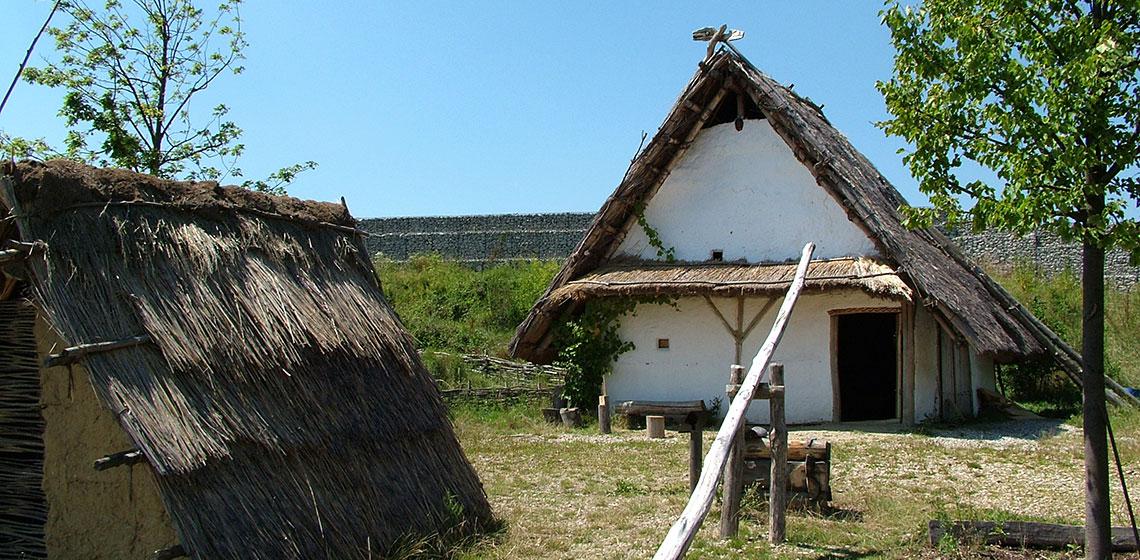Bajuwarenhof Kirchheim (DE)

Near München archaeologists and volunteers constructed a house and several other structures.
Upper Bavaria 1400 years ago... How did people live at that time? What did their houses look like, their working tools and other items of everyday's life? What kind of clothes did they wear, how were fabrics woven, dyed and worked? What did they eat, how did they bake bread, conserve meat or brew mead?
To answer this kind of questions five archaeologists from Munich launched the project “Bajuwarenhof Kirchheim” (Baiuvarian Farmstead Kirchheim) in October 2003. Its main concern is to show people's everyday life in the 6th to 7th century AD based on findings of archaeological research. Therefore an early medieval homestead comprising several houses, a small garden and a field is built on a site in Kirchheim-Heimstetten near Munich, Bavaria. The houses will be furnished and some of them used as workshops, like for instance the first sunken featured building ("Grubenhaus") as a smithy. The first house was finished in March 2005, the work on the main hall started in August 2005.
The Team are four archaeologists aged 25 to 35 based in München with university degrees and long-time-experience in free-lance work.
